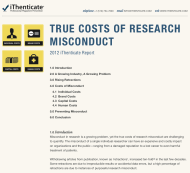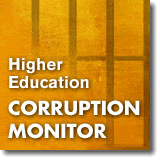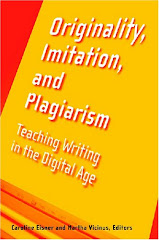Scientists, scientific journals, and research institutions must adhere to an international set of ethical standards and consider the social implications of their work, says a new statement from 2nd World Conference on Research Integrity, co-sponsored by AAAS.
The Singapore Statement on Research Integrity, released 22 September, acknowledges different cultural and national standards for scientific research. But, it concludes “there are also principles and professional responsibilities that are fundamental to the integrity of research wherever it is undertaken.”
The succinct one-page document lists 14 responsibilities for researchers. Individual scientists should share research findings openly and promptly, disclose conflicts of interest, and take responsibility for the “trustworthiness” of their own work, the statement says. Institutions should create policies and work environments that encourage research integrity and institutions and journals should have clear procedures for addressing research misconduct.
The statement also notes four principles that underlie the statement’s responsibilities:
- honesty in all aspects of research;
- accountability in the conduct of research;
- professional courtesy and fairness in working with others; and
- good stewardship of research on behalf of others
“The globalization of research requires the globalization of basic understandings of responsible behavior in research,” the members of the Singapore Statement Drafting Committee wrote in a news release accompanying the document. “The Singapore Statement is intended to encourage and further the development of these understandings.”
Policymakers, university leaders, publishers, and government ministers first drafted the statement at the conference, held 21-24 July in Singapore. The conference was supported by science associations from China, Japan, South Africa, Saudi Arabia, Australia, Korea, the United Kingdom, and the United States. More than 300 delegates from 51 countries contributed to the final statement.
Three officials represented AAAS at the conference: Mark S. Frankel, director of the AAAS Scientific Freedom, Responsibility and Law Program; Gerald Epstein, director of the AAAS Center for Science, Technology and Security Policy; and AAAS Senior Program Associate Deborah Runkle. Frankel and Epstein spoke to the conference about responsible advocacy and the ethics of dual-use research, respectively, while Runkle co-chaired a session on digital plagiarism.
The Singapore attendees sought a set of “international norms and standards related to research integrity that would accommodate national differences,” said Frankel, who helped organize this year’s conference.
The harmonization of these standards is part of a larger commitment by AAAS to support the international integration of scientific values. The effort also has included three years of top-level discussions between the China Association for Science and Technology (CAST) and AAAS to coordinate work on scientific ethics.
Seeking an international agreement on research integrity is one way to pursue harmonization, said Epstein. “Although many different groups have different conceptions of what a code of conduct should focus on,” he said, “there isn’t any culture in which making up data is good.”
Frankel added that the Singapore Statement “is a start to what we hope will be a global discussion of the issues raised at the conference and a basis for future national or regional ethics guidelines.”
22 September 2010







